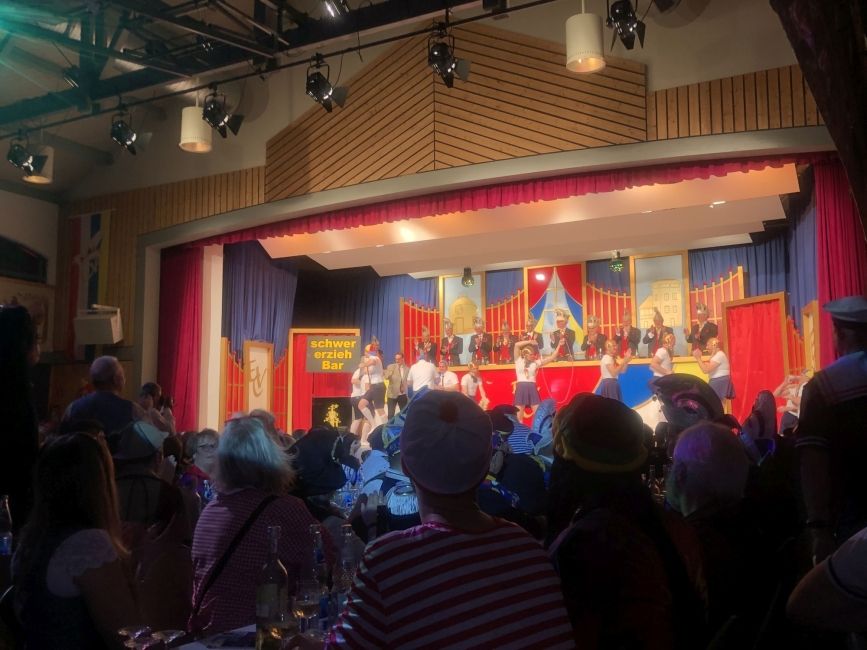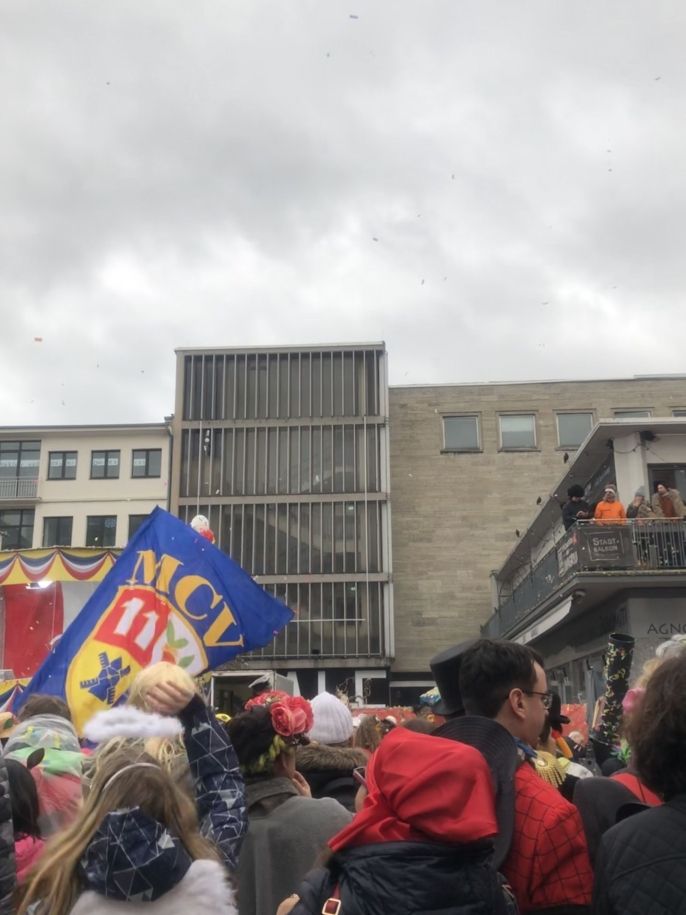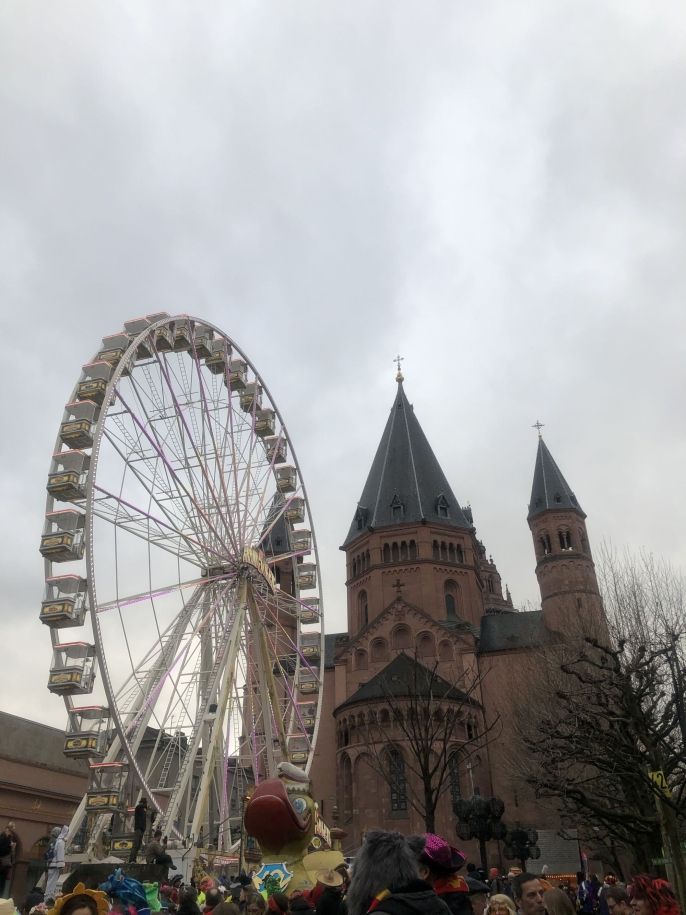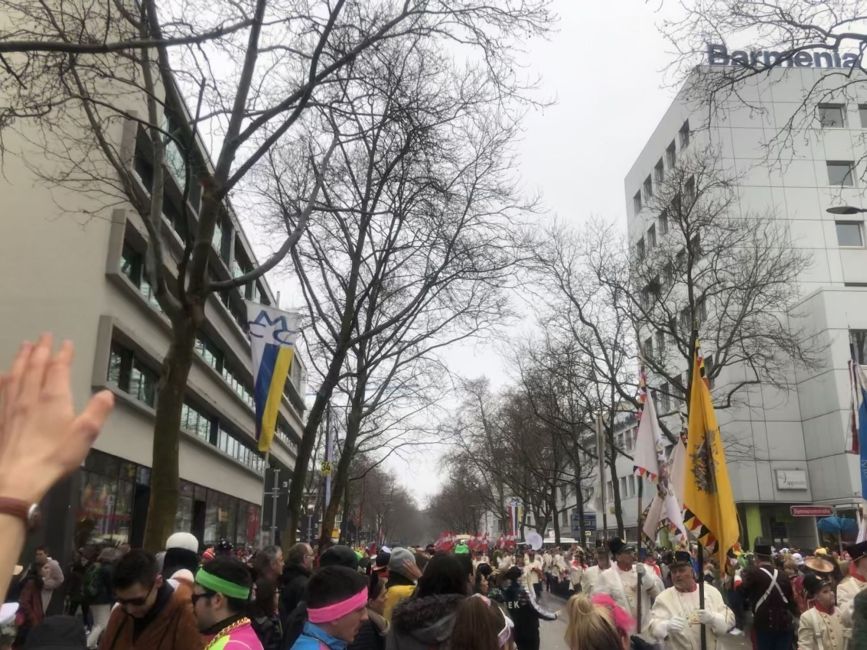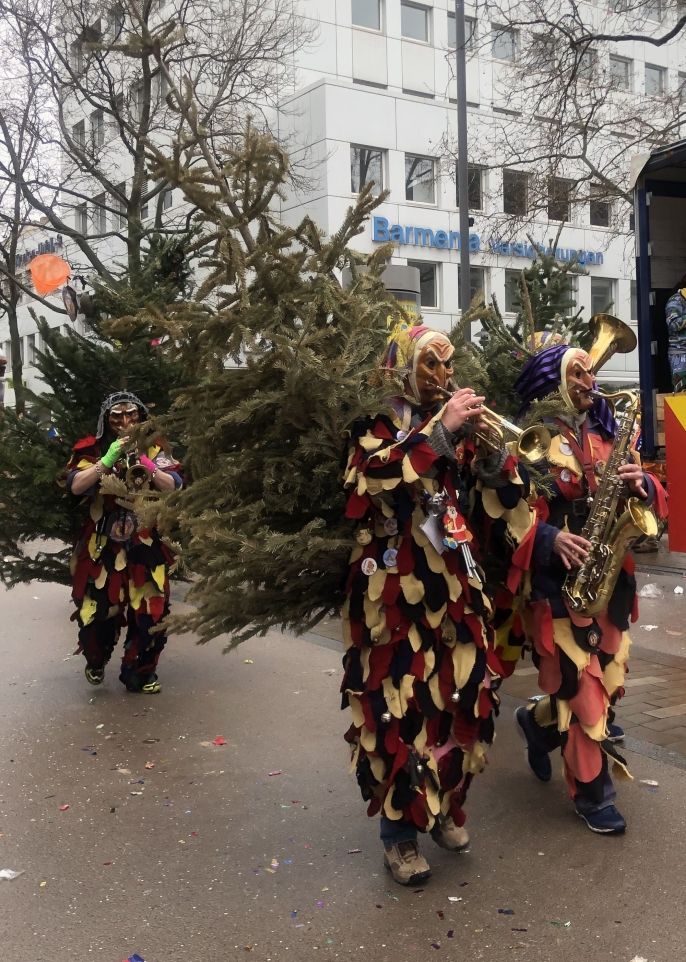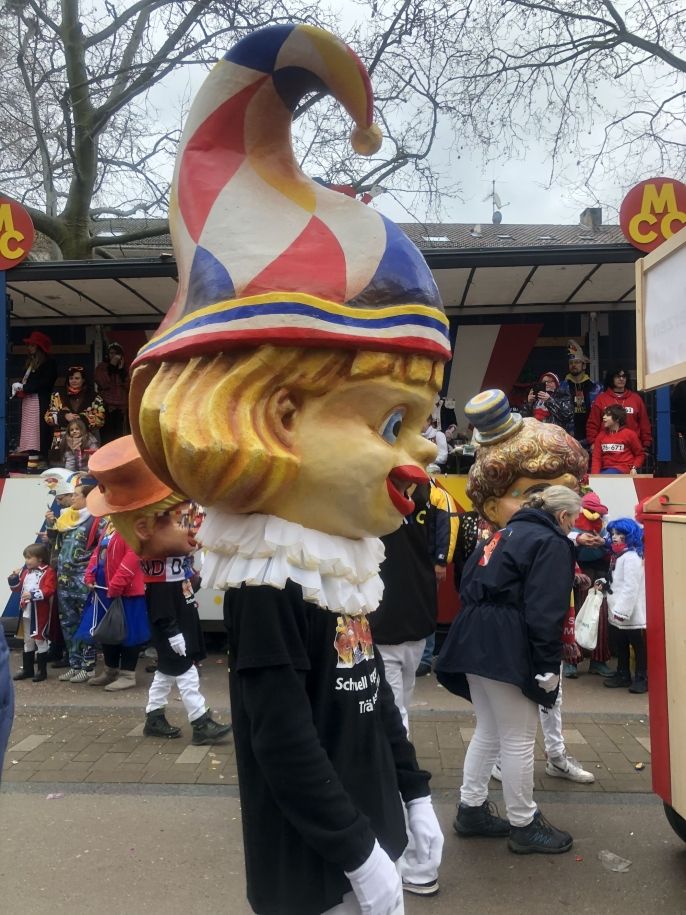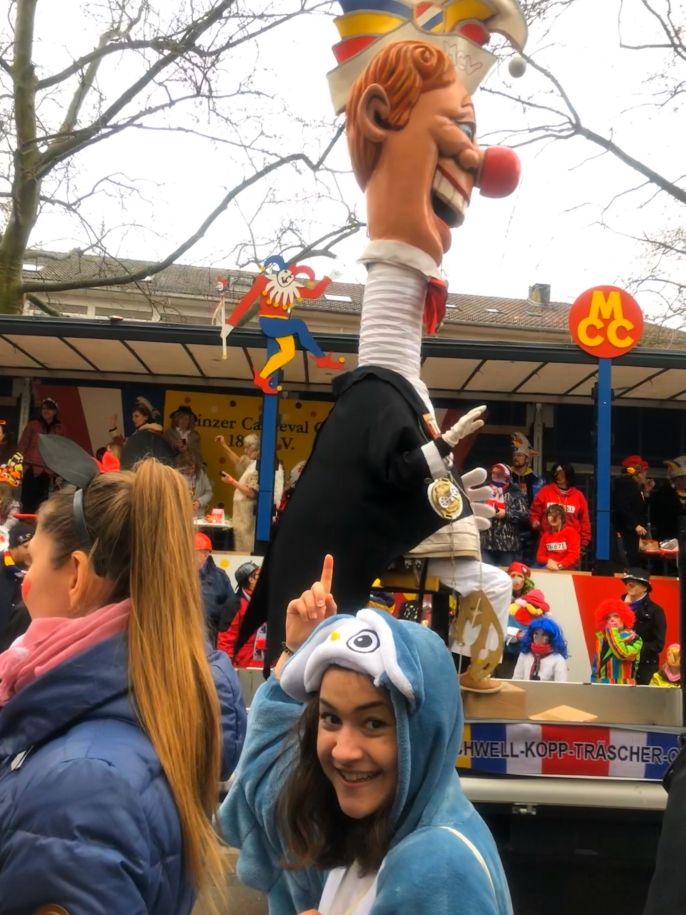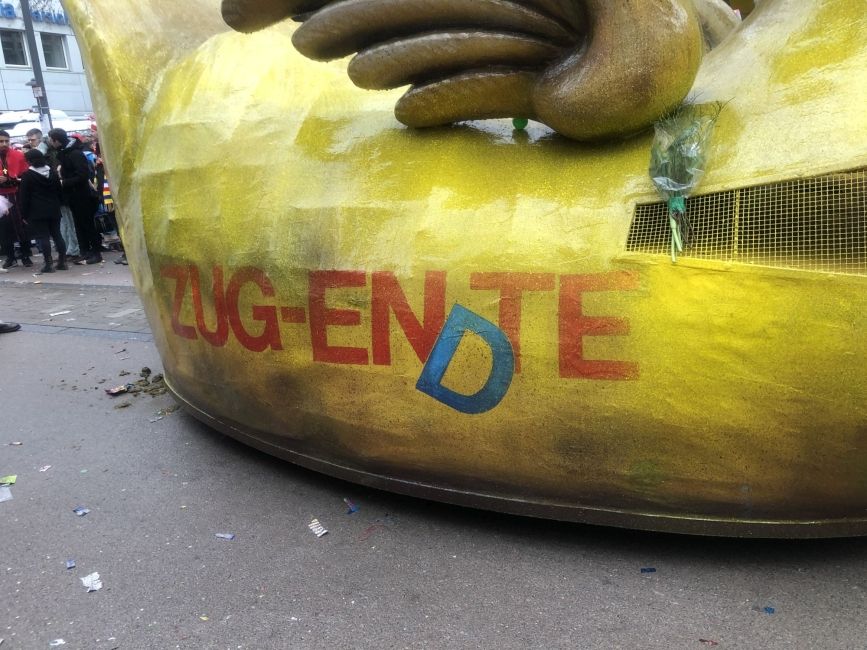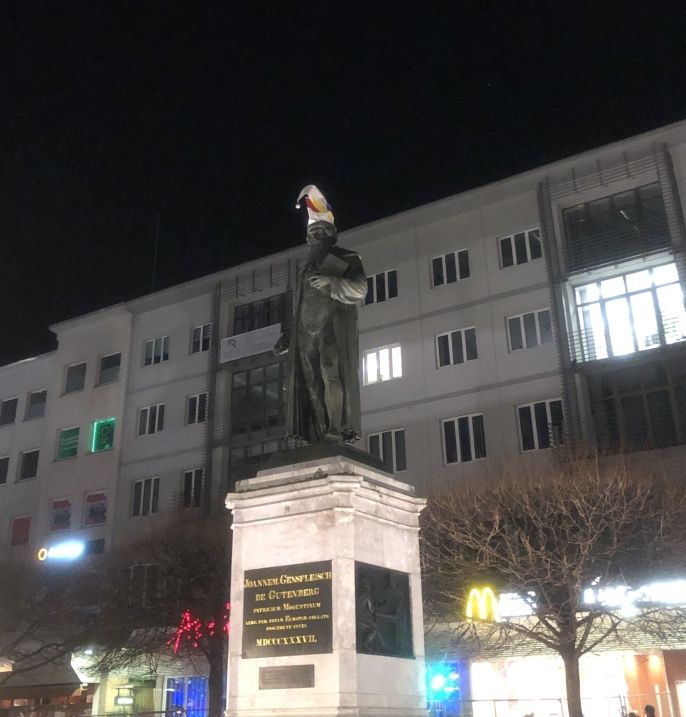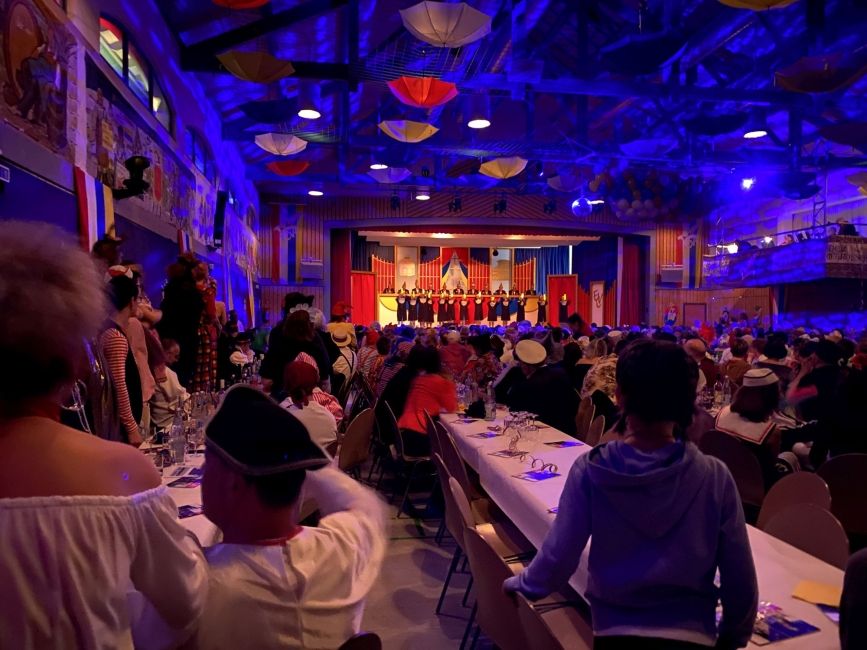Fastnacht
Helau!
This past week, we celebrated Fastnacht (or, in the Mainz dialect, “Fassenacht”), or Carnival, which marks the beginning of Lent. I was also told that it had something to do with the French occupation of Western Germany during the 19th century, which is why it’s mainly celebrated in cities along the Rhine. Mainz is considered one of the three cities in Germany with the strongest Carnival tradition, right behind Cologne and Düsseldorf. There was a lot going on for Fastnacht, and the entire city seemed to be teeming with excitement. The schools here place winter break over the Fastnacht celebrations so that students don’t have to worry about school during the festivities. In general, Carnival consists of dressing up in costumes and enjoying German food and drink, although there are plenty of other traditions as well!
The Thursday before Ash Wednesday is called “Altweiber,” which started as a sort of “women’s Fastnacht,” although it’s mainly understood as the beginning of the Carnival season. On this day, if a man is wearing a tie, a woman can cut it off with scissors. Unfortunately, I didn’t see any men with ties; my host dad told me that they usually avoid wearing them on Altweiber for this reason.
During Fastnacht, there are plenty of traditional “Sitzungen,” which are performances held in halls. One of my friends danced in a group for a Sitzung in her small town right outside of Mainz, so I was able to see more of a traditional Fastnachtssitzung. The entire hall was decorated in yellow, white, blue, and red, which are the official colors of Fastnacht (red, blue, and white for the French flag, and yellow to represent the Catholic Church). On the stage, eleven men sit as a sort of Carnival council. Then, there are a series of dances, comedy skits, and musical acts. The audience sits in the hall and cheers on the performers. After each act, the audience would say “Helau!” three times while bending their right arm from a horizontal to a vertical position like a hinge. The Sitzung was pretty long (it started around 6:30 p.m. and went until midnight), but I really liked the high energy and the relaxed atmosphere!
My host mom, host sister, and I also went to a Fastnacht concert from the orchestra here in Mainz. They had the floor decorated in four large yellow, red, white, and blue stripes, and the musicians even dressed up during the second half of the concert. Between songs, there was a comedian who would come out from behind the stage and deliver a short comedy sketch. Of course, the audience was completely dressed up in costume, which made for a very kicked-back concert.
During the evenings, young people go into the city, where there was a sort of stage set up with music. Naturally, everyone is in costume, mostly in animal onesies to keep warm. The stage plays Fastnacht music (or just popular German songs), and people dance and party. It’s a very charged ambiance, and it was a lot of fun for me to learn the various songs!
The biggest event during Fastnacht, though, is Rosenmontag. This is the Monday before Ash Wednesday, and practically everyone is in the city. Mainz also attracts a lot of tourists for Rosenmontag; it’s estimated that 500,000 people join the celebrations, even though the population is only about 200,000. There’s a huge parade, and I got a lot of candy. My bag was overflowing, which, after years of Fourth of July parades, has never happened to me (although maybe my parade skills are just weak). Besides candy, the floats also threw out small tissue packets, popcorn, plastic balls, and other random things. I got an entire croissant, a donut, a plastic blue pig, and a “Happy Birthday” party banner. My host sister got a red rubber ducky, and my host mom got a small water bottle and a singing birthday card. However, there was still lots of traditional German candy, such as gummy bears and candy bars.
The parade consisted of marching bands, dance groups, and plenty of floats. To get candy, we would shout “Helau!” really loudly. Some of the floats were political, and some were from clubs and organizations. There were also Schwellköpp, which are large heads that people wear over their own heads. I found them a little creepy, but everyone else thinks that they’re funny. Then, there’s a large duck float that trails all the others, with the word “Zug-Ente” (Parade Duck) on the side. However, the letter “D” hangs from the “N,” making it look like “Zug-Ende” (Parade End). The duck, then, marks the end of the parade.
Overall, Fastnacht is a very unique tradition, and it was definitely different than anything I’ve ever seen. Nevertheless, it was a lot of fun, and I’m really glad that I got to experience such an important part of Mainz’s culture!
Until next time,
Grace
